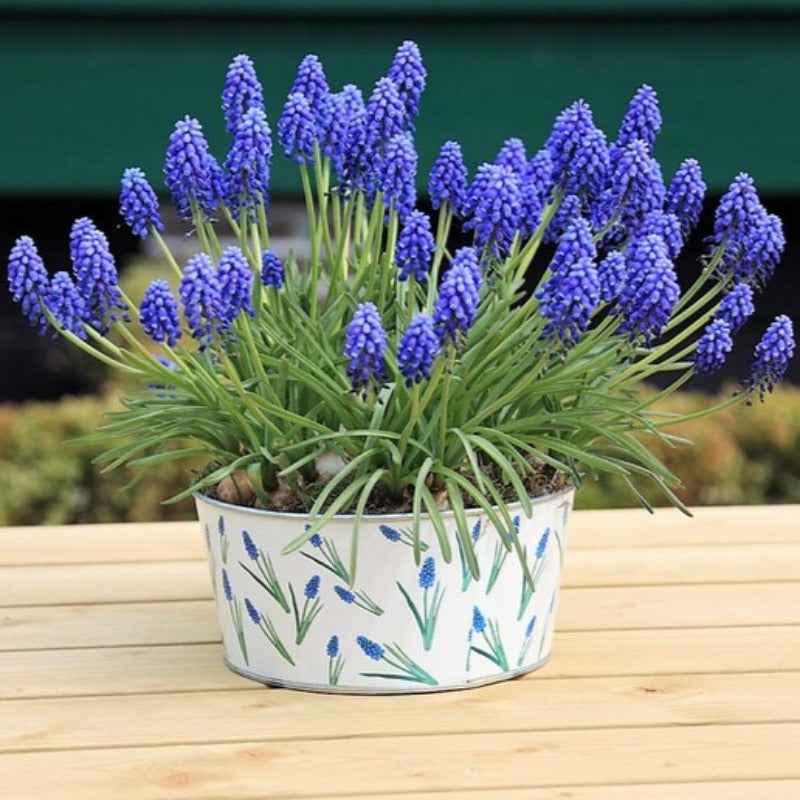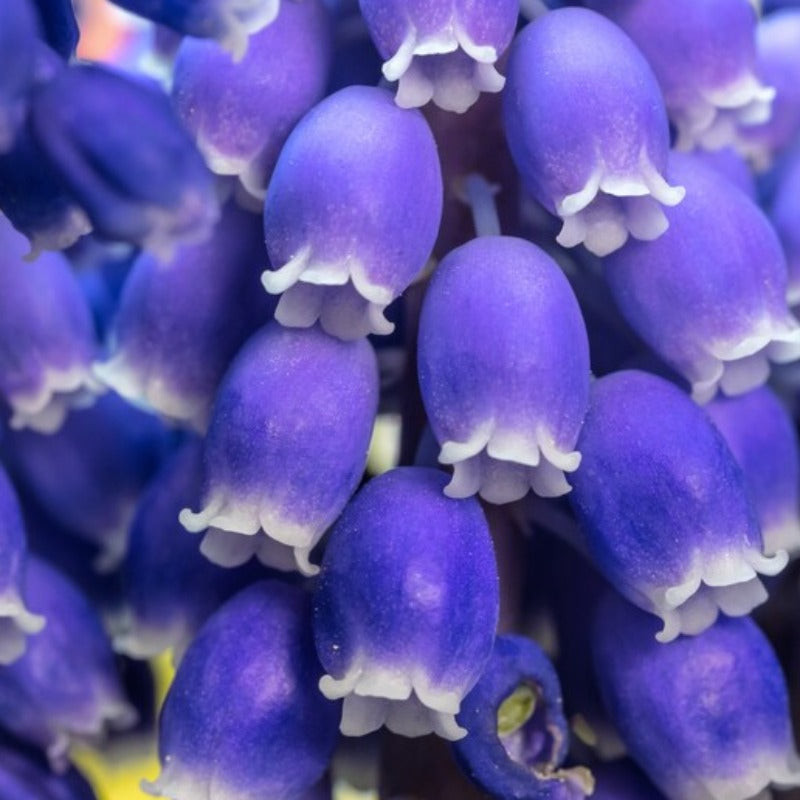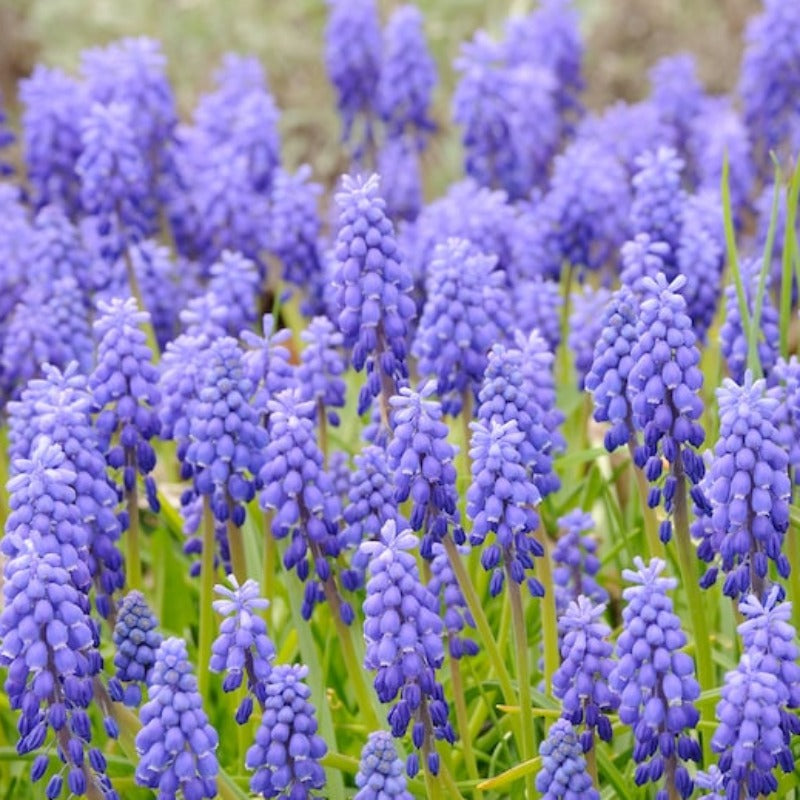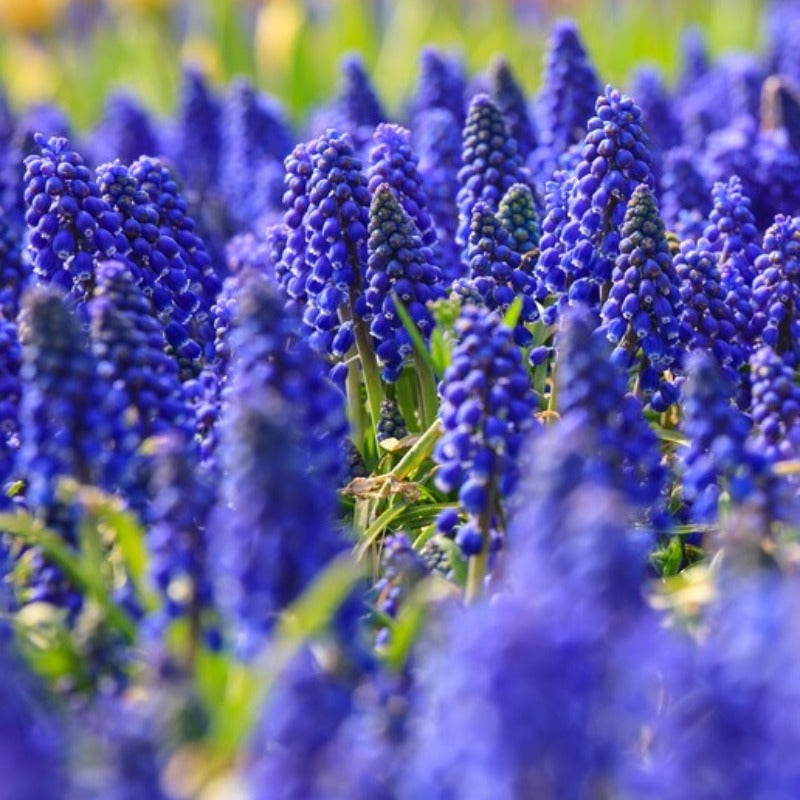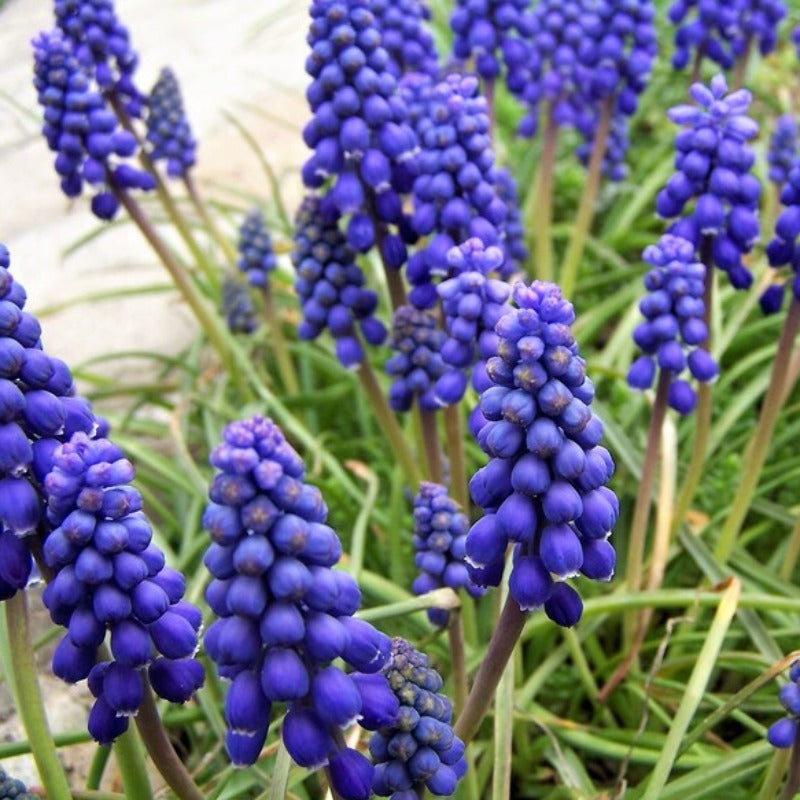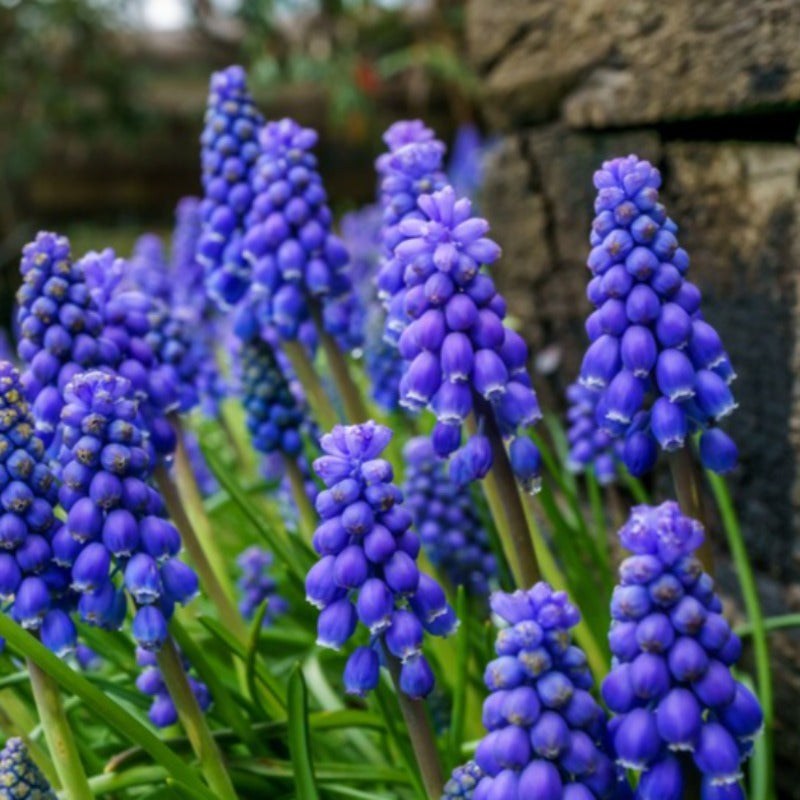- Historical context: Grape hyacinths, known scientifically as Muscari, have been cultivated for centuries and are beloved for their vibrant blue, purple, and sometimes white flowers that resemble clusters of grapes.
- Geographical origination: These plants are native to Eurasia, particularly the Mediterranean region, and parts of Asia Minor.
- Relevant cultural significance: Grape hyacinths have been used in gardens for ornamental purposes and are often associated with springtime due to their early blooming period.
- Time period of discovery: The exact time of discovery is not well-documented, but they have been known and cultivated since ancient times.
- Original habitat: They typically grow in meadows, woodlands, and rocky areas with well-drained soil.
- Notable historical uses: Historically, grape hyacinths have been used primarily for ornamental purposes in gardens and floral arrangements.
- Ideal temperature range: Grape hyacinths thrive in temperatures ranging from 50°F to 70°F (10°C to 21°C).
- Soil type: They prefer well-drained, sandy or loamy soil with a neutral to slightly acidic pH.
- Sunlight requirements: Full sun to partial shade is ideal for grape hyacinths.
- Watering needs: Moderate watering is required. Ensure the soil is moist but not waterlogged.
- Planting season: Plant the bulbs in the fall, about 6-8 weeks before the first frost.
- Germination time: Germination typically takes 2-3 weeks under optimal conditions.
- Growth cycle duration: Grape hyacinths bloom in early to mid-spring and go dormant in the summer.
- Common pests and diseases: They are generally resistant to pests and diseases but can occasionally be affected by bulb rot if overwatered.
- Companion planting advice: Grape hyacinths pair well with other spring bulbs like tulips and daffodils.
- Common challenges and solutions: Overwatering can lead to bulb rot. Ensure proper drainage and avoid waterlogged soil.
- Nutritional values: Grape hyacinths are not typically consumed, so they do not have notable nutritional values.
- Health benefits: There are no significant health benefits associated with grape hyacinths as they are primarily ornamental.
- Culinary uses: Grape hyacinths are not used in culinary applications.
- Medicinal uses: There are no well-documented medicinal uses for grape hyacinths.
- Other unique advantages: Ornamental Value: Grape hyacinths are highly valued for their aesthetic appeal in gardens and floral arrangements.
Early Blooming: They are among the first flowers to bloom in spring, adding early color to gardens.
Low Maintenance: These plants are relatively easy to grow and require minimal care once established.
